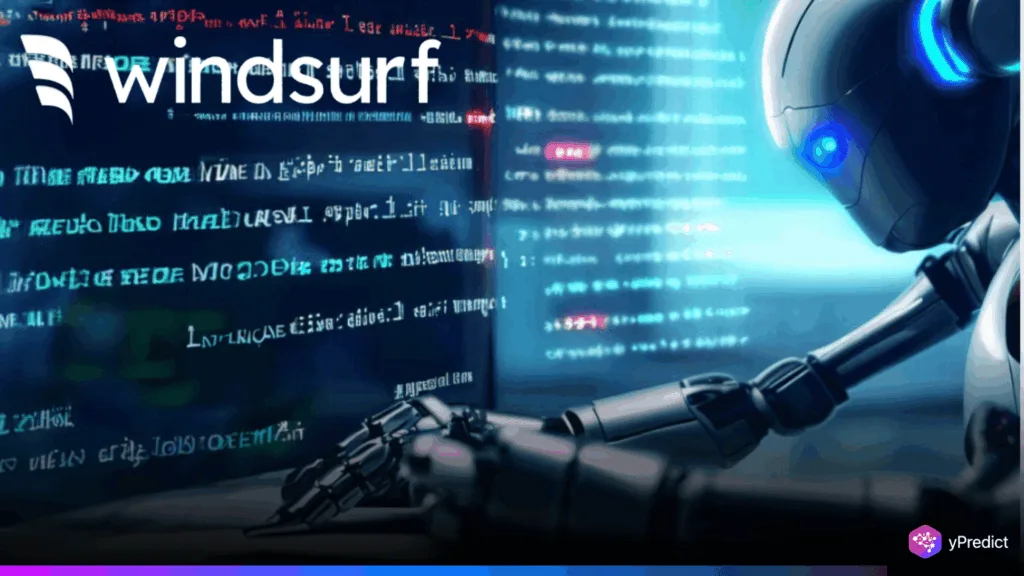
The rapidly expanding vibe-coding startup Windsurf has formally entered the field of AI software engineering with its internal model. It consists of SWE-1, SWE-1-lite, and SWE-1-mini. It was established by engineers who were enthusiastic about developer-first tools. The launch is a bold move, especially considering that OpenAI’s $3 billion acquisition deal was just announced. In addition to helping with code writing, these models promise to support the entire software development lifecycle.
Windsurf’s New Models Aim Beyond Just Coding
Windsurf’s SWE-1 family introduces a tiered structure tailored for diverse users. The most potent model is SWE-1, which is designed for experienced engineers working on challenging projects. On internal benchmarks, it competes with well-known AI models like Claude 3.5 Sonnet, and GPT-4.1. In the meantime, all users, irrespective of their subscription level, can access the simplified versions of SWE-1-lite and SWE-1-mini.
Unlike traditional tools, the goal of these models is to go beyond code recommendations. The rapidly evolving field of AI software engineering is where they stand out. They are also designed for tasks like testing, debugging, refactoring, and working in different environments. However, Windsurf places a high value on performance and accessibility, allowing even free users to benefit from state-of-the-art features.
Can AI Software Engineering Handle Real Developer Workflows?
A major advantage of SWE-1 is its ability to operate across development “surfaces” such as IDEs, terminals, and web browsers. This feature fills a common flaw in current AI models, which frequently neglect to maintain context across tools. By modeling real-world workflows, SWE-1 was trained to manage multi-platform environments, lengthy tasks, and incomplete states.
Nicholas Moy, Head of Research, highlighted the tool’s guiding principle in a product video: “Coding is not software engineering.” This claim highlights Windsurf’s objective, which is to develop an AI assistant that works with others rather than merely finishing tasks. The official blog post and X post have already created a lot of buzz among AI news followers and developers.
Additionally, according to Windsurf, SWE-1 is less expensive than the Claude 3.5 Sonnet. The company claims that better optimization has been made possible by building in-house, even though pricing details are still confidential. Moreover, Windsurf’s ability to control architecture and infrastructure allows it to reduce interference costs.
Windsurf’s Big Move on AI Software Engineering
The SWE-1 lineup is just Windsurf’s first step. The company describes the release as a “proof of concept,” indicating plans for additional AI software engineering innovation. Future models might delve further into specialized fields like cloud management, performance analysis, and security testing.
In addition to growth, Windsurf is anticipated to concentrate on improving model intelligence. It could close the current gap with top-tier AI models by becoming more adept at navigating larger codebases and more abstract problems. Moreover, the organization is aware of problems like bias, tool integration, and dependability, which it plans to address in versions.
A clear long-term goal is to integrate AI as a partner in the software development process. Windsurf wants to improve code quality, expedite processes, and increase engineering productivity. The combination of full-lifecycle support and cost-effectiveness creates the conditions for broad adoption.
Windsurf Redefines Coding With SWE-1 Family
As Windsurf delves into foundational model creation, the shift toward holistic AI software engineering becomes clear. The company is building the foundation for a future of faster and smarter development. Its vibe-coding apps and full-stack AI platforms enable more collaborative engineering.
Although human knowledge remains crucial, SWE-1 offers a clear preview of a future where AI acts as a trustworthy co-pilot. This advanced model supports engineers throughout complex workflows. Furthermore, Windsurf is dedicated to leading rather than trailing in this rapidly changing landscape.






